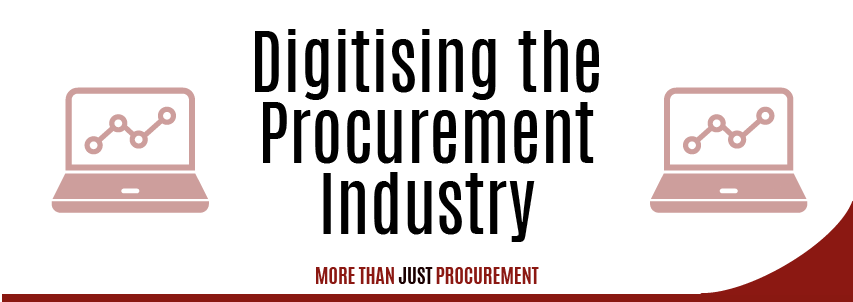Digitising the process of procurement
Tips & Tricks • 2 min read • Feb 3, 2022 12:00:00 AM • Written by: Amelia Inskipp

With today’s industry rapidly changing, businesses are having to deal with increasing competition, and adapting quickly to the new pressure of business processes. With the world using more digitalised technology, this had a huge impact and influence on the way business is conducted. Even more so, the effect COVID19 has had on businesses mean they have had to adapt rapidly to these innovative technologies.
Digitising the Process of Procurement
With the process of procurement becoming increasingly more complex, traditional business models are now too inefficient to keep up with the demand. With procurement, it is time and resource consuming, therefore developing a more efficient way to carry out these processes can achieve savings in costs and time. It is expected with digitalisation to have a large impact on procurement as it could lead to 40-60% cost reductions.
Digital transformation is the concept of embracing digital systems like artificial intelligence (AI) to revolutionise business models. In procurement, digitisation is key for businesses to identify cost-saving opportunities, enhance supply chain visibility as well as improve communications and using technology to revolutionise this process can help benefit and refine business practices.
Being ahead in new technologies and developments, while implementing cost savings, puts businesses ahead of the game. Using innovative technology such as blockchain or AI will make the process of procurement far more strategic and manageable, meaning it becomes more proactive.
Furthermore, using state of the art technology eradicates the need to plan upfront what goods and services you can get for the best value. This technology allows for more accurate actions and to make real-time decisions more precisely. It also allows analysis to occur at any stage of sourcing and to identify market and vendor performance, even before starting a vendor sourcing process.
These new technological advancements can help through bots or AI processing the vast amount of data that the procurement process possesses and making strategic management decisions. AI may reduce the human involvement businesses currently have, especially within repetitive tasks which can save both time and money. This also reduces the chance of human error, which with machines, mistakes can be easily fixed. However, it is not about replacing humans with machines, but rather cooperating and transforming the way businesses are run.
There are many more digital solutions that can land businesses with a competitive advantage. Some of these include intelligent content extraction, crowdsourcing, cyber tracking, and predictive and advanced analytics. These can perform tasks such as learning algorithms, to predict scenarios such as cost fluctuations and supplier/country risks.
These solutions can bring additional value and using multiple technologies and solutions could see the value of a business grow exponentially.
Like all new transformation initiatives, there are challenges when taking them on. Businesses may question whether embarking on a digital transformation is too much too soon for them. IT infrastructures can be complex within a business and sometimes a new system that can be integrated into these existing infrastructures can be challenging.
Furthermore, another challenge is whether a business has a strong strategy in place to support a technological transformation, and if people within the business will support new technologies and be engaged with adapting to them. Whether a new process succeeds or fails relies on the support and willingness of people within the business to use them. However, if a strategic roadmap is put in place, communication with the wider organisation can help support to drive engagement.
We can see that new innovative technologies can give greater insight and context about procurement and strategic functions. Furthermore, with many procurement leaders having cost reductions and spend optimisation as a top priority, it is clear that digitising procurement is a great investment going forward.
Reach the World. Giving Made Easy with Impact.
Amelia Inskipp
Related Articles

Tips & Tricks
5 Ways to optimise procurement processes

Business News
Mining Processes: Placer Mining

Tips & Tricks
Procurement Trends 2023
Don't Miss Out On A Thing
Sign up and Join Our Newsletter Today